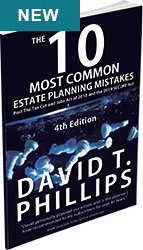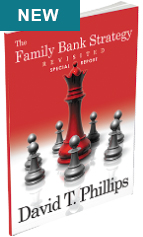
Universal Life Insurance
By Todd Phillips
The first creation under the umbrella of permanent insurance that actually separated the cost of insurance from the investment deposit was universal life. The first generation had heavy front-end loads and used 1958 mortality table assumptions, but the product continued to improve and, within two years of its creation, companies began to introduce the "second generation." Universal life, a consumer-created product, has become the mainstay of the insurance industry.
What is Universal Life?
Universal life (UL), often referred to on the policy as “flexible premium adjustable life,” is composed of the same elements as any permanent product. The difference is with universal life, the elements have been "unbundled,” and therefore charges, and expenses are disclosed to you.
In other insurance products such as whole life, these elements are visible only to the actuary who designed the product. The actuary takes them all into account but determines one composite premium rate for the product. This can make it impossible to determine where the money is going and does not allow for much flexibility.
Advantages of Universal Life
One of the main attractions of universal life is its flexibility. With universal life, you truly are in the driver's seat. You can tailor design the plan to suit your needs and budget. Each company has a minimum annual insurance premium that has to be paid each year to cover mortality, an amount that is based on the amount of insurance you desire and age. But other than that, like Burger King, you can “have it your way.”
You can decide:
- How much additional premium you would like to deposit into the savings element of the policy. (Remember, this grows tax-deferred and can be withdrawn tax-free.)
- To pay your premiums for only a few years and then pay no more.
- When you want your premiums to stop and start.
- To increase or decrease the face amount without canceling the existing policy.
Features:
Minimum Guarantees
While universal life is not guaranteed quite to the extent of whole life, it still offers a guaranteed interest rate and has a maximum amount of charges. Most policies offer a guaranteed minimum interest credited to the cash value between 3.5% to 5%.
Current Rate
If you own a universal life policy or have ever received an illustration of premiums, you will notice two major columns: one showing the guaranteed assumptions and the other illustrating current assumptions. The current assumptions column illustrates how your policy would grow if things stayed the same as current conditions for the remainder of your life. This includes the current charges and interest credited on the premium deposited. The current rate usually is set by the insurance company, but may be indexed to T-bills or another current money rate.
The goal, if you own a universal policy, is to have interest rates up because that means you will be earning more on your cash in the policy. If market interest rates drop lower than when you purchased the policy, you may have to increase the premium deposits in order to keep the policy in force, and the cash accumulation will be less than illustrated. Of course, you can expect the opposite to happen if interest rates go up.
Death Benefit Options
You can choose the traditional, level death benefit, which is constant; or the second option, which provides a death benefit equal to the face amount plus the cash value. Many policies also offer an accelerated death benefit, which allows you to withdraw a percentage of your death benefit to help pay for a terminal illness or nursing care.
Riders
A brand new feature as of 2008 is the Long-Term-Care rider. These newer contracts allow you to take withdrawals from your Death Benefit while you are living for Long-Term-Care purposes/Chronic Illnesses. Typically the triggering benefit is you need a doctor’s note stating you cannot perform 2 of the 6 Activities of Daily Living (ADLs) which includes: Bathing; Continence; Dressing; Eating; Toileting; and Transferring. The benefits also can be triggered by having cognitive impairments such as Alzheimer’s.
Guaranteed No Lapse – You can add a feature to your Universal Life policy that like whole life, will guarantee coverage for your desired time frame or age, the most often is issued for the rest of your life which is illustrated to age 120.
Monthly Deductions
In effect, the level term costs are deducted each month to pay for the insurance in force. The balance of the deposit is invested into your side fund.
Access to cash accumulation
You can either borrow your money tax-free or make partial withdrawals. Withdrawals are taxed on a "first in, first out" basis. If the money is borrowed, the insured usually pays the company loan interest rate typically around 8%, but at the same time the borrowed funds continue to accumulate interest usually around 4%-6%. The difference is called the “Net Cost of Loan.”
Reports
You receive an annual report of all transactions, with summaries of current cash values, death benefits and all expenses charged, as well as of loans and withdrawals.
Unscheduled payments
You can add money at any time, provided it doesn't conflict with the 1984 DEFRA guidelines that spell out specific ratios between cash value and death benefits.
Increased coverage
Your face amount can be increased without buying another policy after providing evidence of insurability when required.
Universal Life Insurance is Best Suited For People Who:
- Want life insurance that will last a lifetime
- Want to take advantage of the tax-deferred growth
- Want to be able to withdraw money tax-free
- Want to give loved ones a benefit that is not taxed (as with all insurance products)
- Like to know where the money is going – (full disclosure)
- Like the flexibility of being able to change policy features such as death benefit and premium payments
- Like the comfort of having a guaranteed return
- Are willing to trade the possibility of higher returns for lower risk (otherwise consider indexed or variable universal life)
- Do not want to take an active role in watching the investments of within the policy
For a free consultation, including quotes and personalized illustrations, call now! 1-888-892-1102




